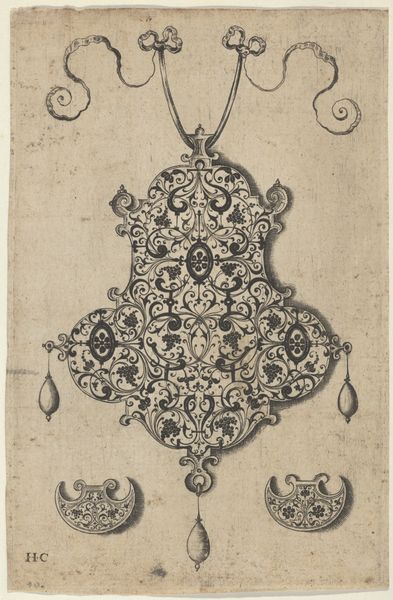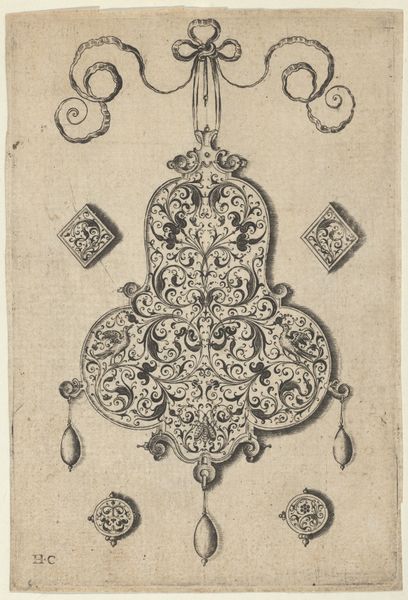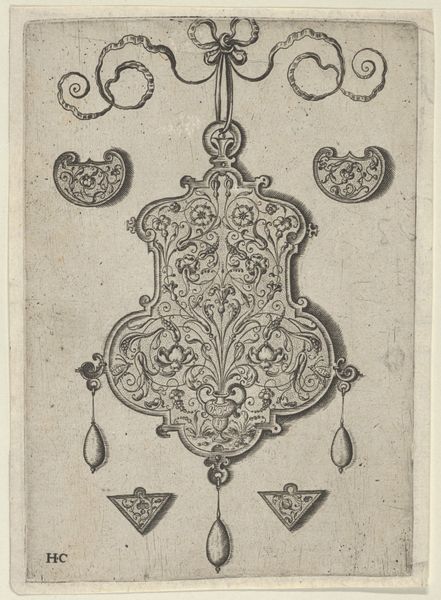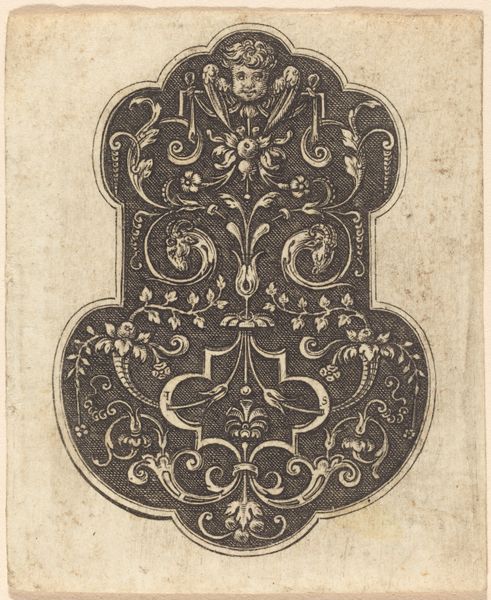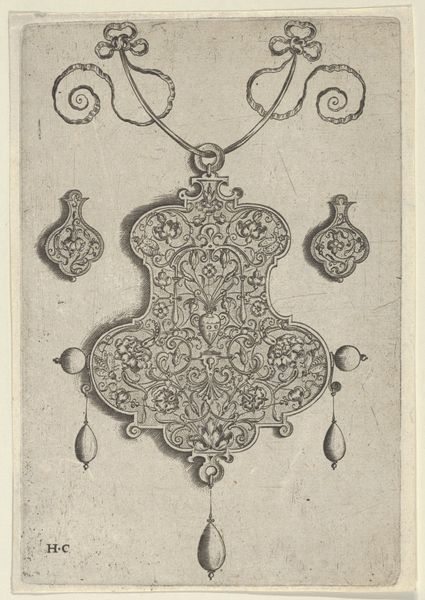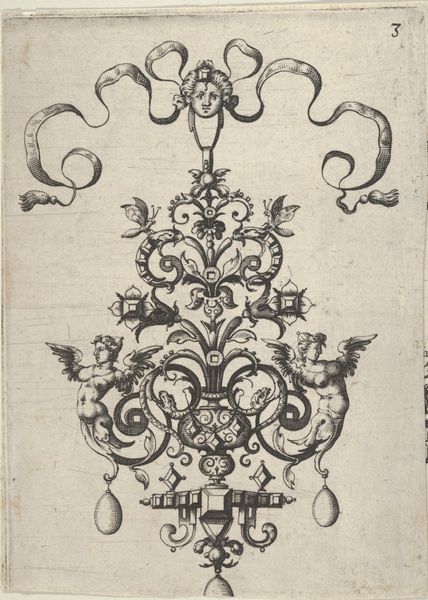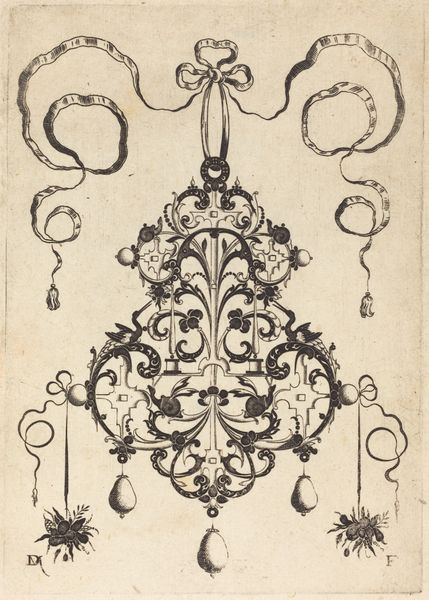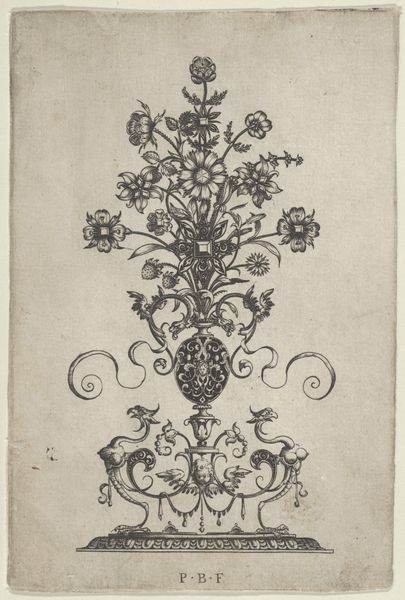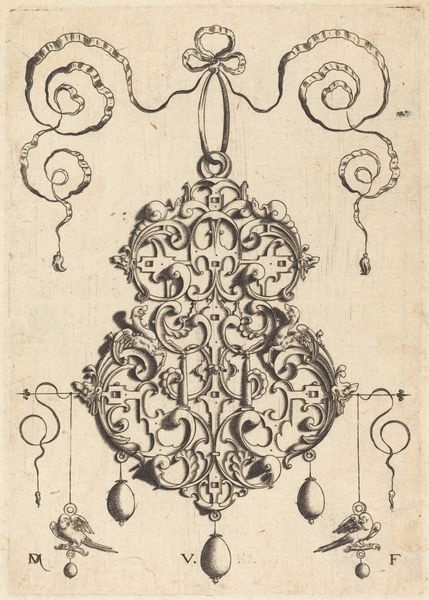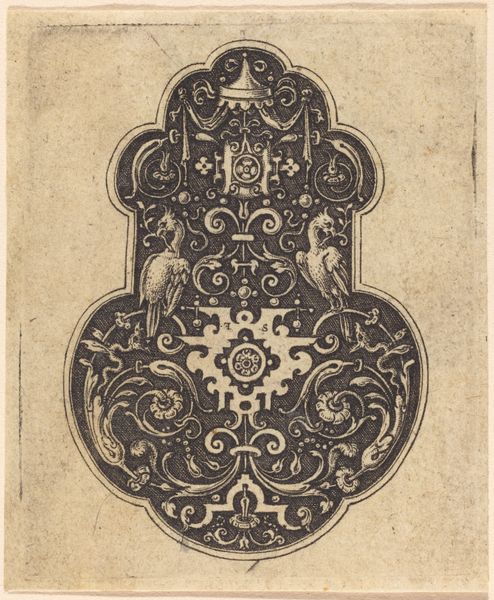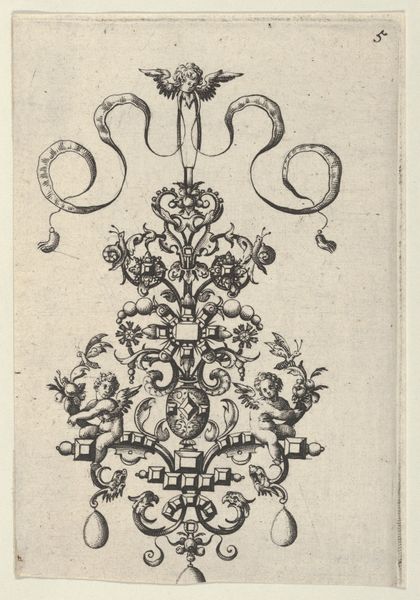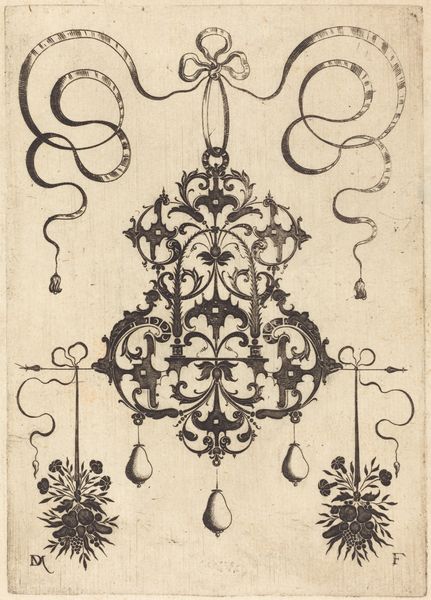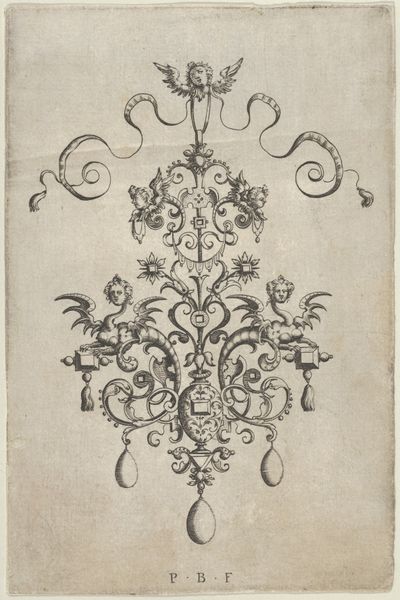
Design for the Verso of a Pendant with an Oval Motif Between Strapwork 1530 - 1573
0:00
0:00
drawing, print, engraving
#
drawing
#
pen drawing
# print
#
geometric
#
northern-renaissance
#
decorative-art
#
engraving
Dimensions: Sheet: 5 9/16 × 3 7/8 in. (14.1 × 9.9 cm)
Copyright: Public Domain
Curator: Oh, how curious… it feels like glimpsing a hidden world, an invitation into someone's intricate daydream. Editor: Yes, the detail is quite captivating. What we're seeing here is a print, "Design for the Verso of a Pendant with an Oval Motif Between Strapwork" created by Jan Collaert I sometime between 1530 and 1573. It resides in the collection of the Metropolitan Museum of Art. Curator: The density of ornament is almost overwhelming! Like staring into one of those magic eye images... but perhaps a bit less headache-inducing? Though it teeters on the edge. There's such commitment here... I wonder, was this intended as a practical design, or more of a playful, almost performative demonstration of skill? Editor: It definitely speaks to the craft tradition. Considering the period, it’s very likely intended for practical use. Prints like this served as patterns for artisans—goldsmiths, perhaps—to translate these elaborate designs into wearable objects. The engraving technique allows for multiple reproductions, disseminating stylistic trends and making complex ornamentation accessible. Curator: So, it’s more blueprint than artwork? I suppose every drawing breathes with intention... still I see more of a fantasy than calculation here, a personal exploration expressed through the symbolic language of the era. Editor: "Fantasy" still required skill. Each looping flourish and precise line had to be deliberately incised onto the copper plate, inverted as a direct, physical translation for replication to guide artisanal making and perhaps, be traded and sold to other workshops. The commercial aspect really underscores the object’s intent: for use. Curator: And perhaps for something beautiful. In the end, the intent of commerce led to this strangely intimate dance between structure and pure, swirling escapism, between constraint and boundless expression. Editor: Precisely. It reflects the economy that demanded ornamentation—material excess of the Renaissance and a culture of making—and it's very human investment that it also become its own testament to both skill, craft, and trade, as you eloquently described. Curator: So we meet at the confluence of craft and catharsis! Editor: I suppose we do!
Comments
No comments
Be the first to comment and join the conversation on the ultimate creative platform.
